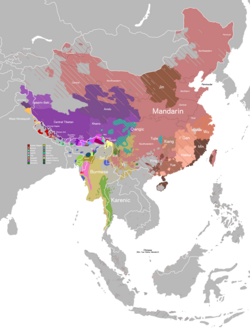This article includes a list of references, related reading, or external links, but its sources remain unclear because it lacks inline citations .(August 2025) |
| Maraic | |
|---|---|
| Geographic distribution | Mizoram, India and Chin State, Myanmar |
| Ethnicity | Mara |
| Linguistic classification | Sino-Tibetan |
| Language codes | |
| Glottolog | mara1381 (Maraic) |
The Maraic languages are a branch of Kuki-Chin languages.
